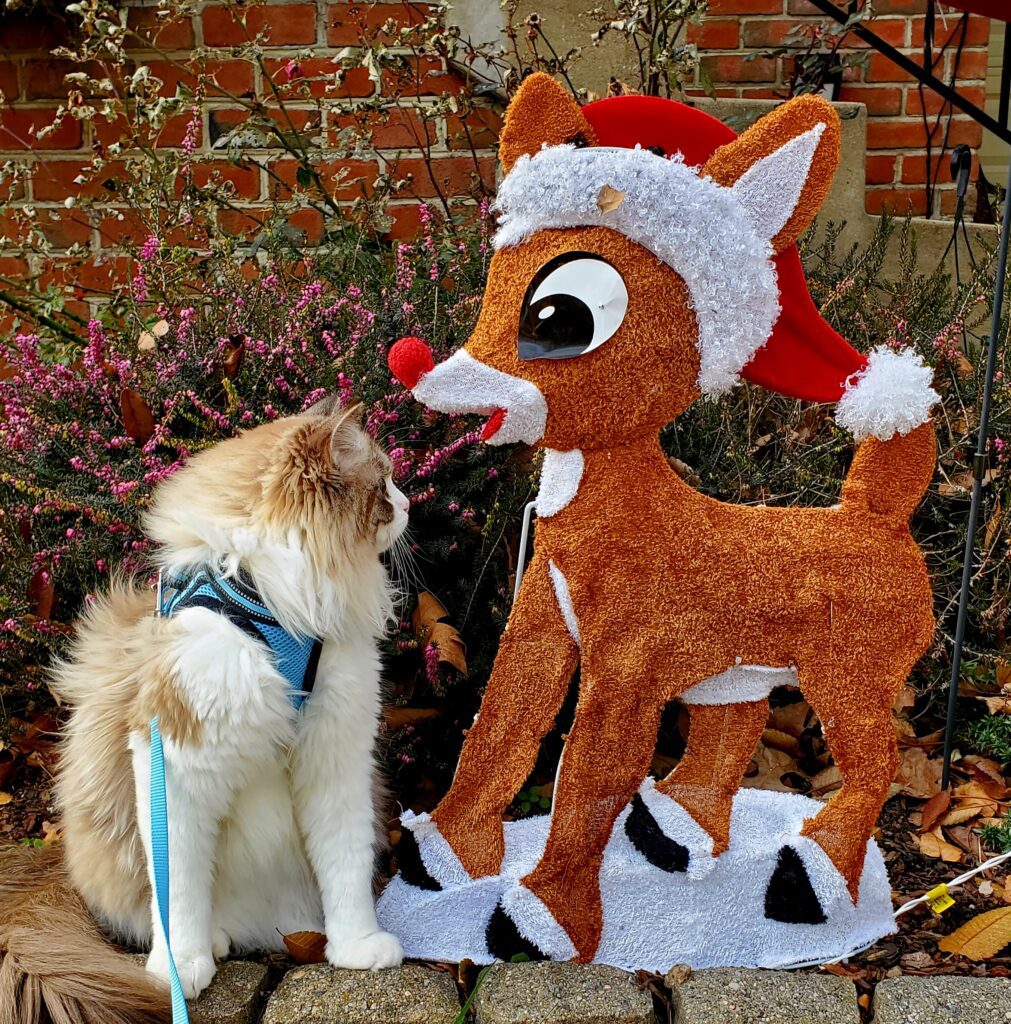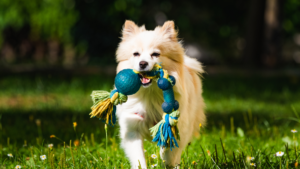‘Tis the season! We’re just a few weeks away from Christmas and that means gift-giving galore for many of us. If you’re like me, your pets are your children, so you treat them as such and find so much happiness in giving them something that brings them joy.
How do you determine what to give your pets, though? They can’t write a list to Santa or tell you all the things they want when you walk through the mall. While we can’t get our pets to tell us the exact thing that they want, we can communicate with them to understand their likes and dislikes by working with an animal communicator. If you don’t currently have an animal communicator, here are a few things you may want to consider when buying a gift for your pet.
- Playstyle – First and foremost, I consider the pet’s play style. Some pets are happy to play alone, chewing on a bone or chasing a ball around the yard. Others get bored very quickly if left to entertain themselves and prefer to have a playmate for a vigorous game of tug-of-war. Are they high energy, preferring to run like a maniac? Or do they have a more sedate playstyle, lounging around for hours with a stuffed squeaky toy? Take a moment to notice which toys and activities your pet chooses on his own. Then select gifts that fit their particular playstyle.
- Engagement and enrichment – Most animals prefer gifts that engage their senses. Food treats are often at the top of their list as they engage the senses of sight, smell and taste all at once. What captures your pet’s attention – is it a bird quickly flitting past the window? Or the scent of bacon in the air? Perhaps it is sound that captures their attention. Or two senses combined, like texture and smell, that engage your pet.
I use homemade puzzle games to engage my smart cat. Dropping small treats into a puzzle maze made from cardboard gives him the chance to use his sense of smell and sight to locate the treat. This also satisfies his urge to hunt by chasing and catching the treat. How can you challenge your pet mentally and physically to engage them in a satisfying game? To further alleviate boredom for my cat, I fill a few small treat puzzles and hide them around the house for the cat to hunt while I’m away or occupied. A Kong or puzzle works well for dogs in a similar way.
- Toy safety – This is high on my list of priorities. If your dog is a chewer, make sure that the gift cannot be chewed up into small pieces and swallowed. In fact, many emergency surgeries are performed around the holidays because chewers swallow even large objects. Check all toys for small pieces, such as plastic eyes, that can easily be pulled off. Or strings that could cause a strangulation hazard. If you have multiple pets in your household be sure that the cat toy is not a hazard for the dog and vice versa. Research where the gift is made and out of what material. Some items from overseas have been known to contain harmful, toxic ingredients. I like to select gifts made in the USA whenever possible.
- Eco-friendly materials – When there is a choice, I always prefer to give gifts that are made and packaged with eco-friendly materials. This can be tough to do these days as so many items are made out of plastic and packaged that way as well. When I visit a pet store, I see lifetimes of plastic pet toys filling our landfills. It takes more effort to find but, there are eco-friendly pet gifts available. Perhaps a cotton sweater for your little pup or a catnip mouse made from natural wool fibers. Handmade gifts are always a great idea as you can make them yourself or find them on Etsy. Most cats are just as happy with a homemade cardboard toy as an expensive plastic one. When your pet tires of last year’s toys, please consider recycling, regifting or donating them rather than sending them to the landfill.
- Longevity – When it comes to pet toys, longevity is less of an issue. Pets tend to get bored with most toys long before the object wears out. These days it can also be an issue of simply too many toys to choose from. Remember that less is more. A good strategy is to take away half of the available toys. Clean and store them away to be reintroduced as “new” at a later date. Or set up a toy exchange with some of your friends. Our pets don’t care if the gifts are new or used. Let them thoroughly enjoy a few toys then cycle them away as you bring out another batch that then receives fresh interest. If there is no fresh interest from your pet, it is probably time to donate that toy to a local shelter or rescue.
- The gift that keeps giving – The joy I find in giving does not extend only to my own pets but also to the beloved pets of those that have less to give. For each pet gift you purchase this holiday season, please consider donating one to a local organization that provides pet food or gifts to families in need.
Now that you know what to consider when purchasing a pet gift, read part 2 to see what toys are trending this holiday season! Remember that no matter what you get, your pet’s favorite thing will be your time and attention. So be sure to give extra love this holiday season.
Wishing you, your family, and your pets a season filled with your favorite gifts!



